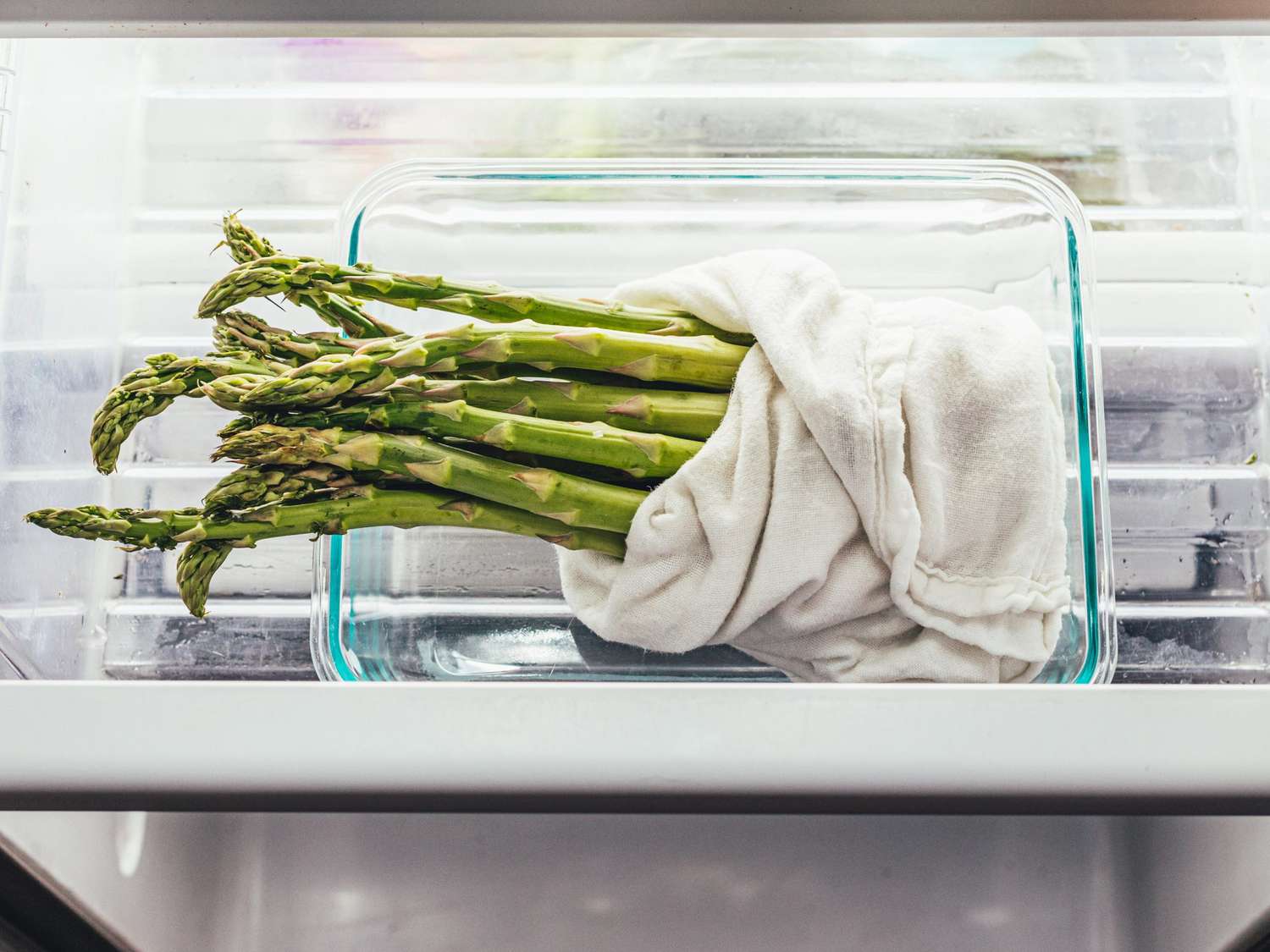

Articles
How To Store Fresh Asparagus In Fridge
Modified: February 26, 2024
Learn the best ways to store fresh asparagus in the fridge to keep it crisp and flavorful. Check out our informative articles for helpful tips and tricks.
(Many of the links in this article redirect to a specific reviewed product. Your purchase of these products through affiliate links helps to generate commission for Storables.com, at no extra cost. Learn more)
Introduction
Asparagus is a versatile and nutritious vegetable known for its delicate flavor and vibrant green color. Whether you grow your own asparagus or purchase it from a local farmer’s market, proper storage is essential to maintain its freshness and extend its shelf life. Storing fresh asparagus properly will ensure that it stays crisp, tender, and flavorful for longer periods, allowing you to enjoy this delicious vegetable in various recipes.
In this article, we will explore the importance of storing fresh asparagus correctly and provide a step-by-step guide on how to store it in the refrigerator. By following these simple tips, you can maximize the shelf life of your asparagus and ensure that each stalk remains crisp and delectable until you’re ready to use it.
Key Takeaways:
- Properly storing fresh asparagus maintains its flavor, texture, and nutrients, reducing food waste and allowing year-round enjoyment. Follow simple steps for optimal storage and culinary delight.
- From blanching to selecting the right container, each step in storing asparagus is crucial for preserving its quality and freshness. Enjoy vibrant green goodness in various dishes with proper storage.
Read more: How To Store Fresh Asparagus
Why is it important to store fresh asparagus properly?
Proper storage of fresh asparagus is crucial for several reasons. Firstly, it helps to maintain the flavor and texture of the vegetable. Asparagus is known for its delicate taste and tender texture, and improper storage can cause it to become limp, woody, or bland. By storing it correctly, you can ensure that each stalk retains its unique flavor and preserves its crispness.
Secondly, storing asparagus properly helps to maintain its nutritional value. Asparagus is packed with vitamins and minerals, including vitamins A, C, E, and K, folate, and potassium. These nutrients can degrade over time, especially when exposed to unfavorable storage conditions. By keeping asparagus fresh, you can preserve its nutritional benefits and enjoy its health-promoting properties.
Furthermore, proper storage reduces food waste. Asparagus can spoil quickly if not stored correctly, resulting in discoloration, sliminess, or a foul odor. When you store asparagus properly, you minimize the chances of it going bad before you have a chance to use it. This not only saves you money, but it also promotes sustainability by reducing unnecessary food waste.
Lastly, storing asparagus properly allows you to enjoy this seasonal vegetable long after its peak harvest. Asparagus is typically available in abundance during spring, but with proper storage techniques, you can extend its shelf life and enjoy it year-round. Whether you’ve grown your own asparagus or purchased it, knowing how to store it correctly will allow you to savor its freshness and flavor for an extended period.
Overall, proper storage of fresh asparagus is crucial to maintain its flavor, texture, nutritional value, and to reduce food waste. By following the appropriate storage techniques, you can enjoy this delightful vegetable at its best and make the most out of its abundance during the harvest season.
Step 1: Preparing the asparagus for storage
Properly preparing the asparagus before storing it is the first and essential step in ensuring its freshness and quality. Follow these steps to prepare your asparagus for storage:
- Begin by rinsing the asparagus under cold water to remove any dirt or debris. Gently rub the stalks with your fingertips to clean them thoroughly.
- Next, trim off the tough ends of the asparagus stalks. Hold each stalk near the bottom and bend it until it snaps. This natural breaking point indicates the transition from tender to tough. Discard the fibrous ends.
- For best results, it’s recommended to blanch the asparagus before storage. Blanching involves quickly boiling the asparagus and then immediately placing it in ice water to stop the cooking process. This step helps to preserve the vibrant color and retain the crispness of the asparagus. Bring a pot of water to a boil and carefully add the asparagus. Let it boil for 2-3 minutes, then quickly transfer it to a bowl of ice water for another 2-3 minutes.
- After blanching, remove the asparagus from the ice water and pat it dry with a clean kitchen towel or paper towels. Ensuring that the asparagus is thoroughly dried helps prevent excess moisture, which can lead to spoilage.
- Lastly, you can optionally wrap the asparagus in a slightly damp paper towel to provide some moisture. This helps to prevent the asparagus from drying out but should not make it overly wet. Place the asparagus on the paper towel and gently roll it up, then store it in a suitable container.
By taking the time to properly prepare the asparagus before storing it, you are laying the foundation for maintaining its freshness and quality. With your asparagus now cleaned, trimmed, blanched, and dried, you are ready to move on to the next step in the storage process.
Step 2: Choosing the right storage container
Choosing the right storage container is crucial to maintain the freshness and quality of your stored asparagus. Here are some tips for selecting the appropriate container:
- Opt for a container that is tall enough to accommodate the length of the asparagus stalks without bending or overcrowding them. This helps to prevent damage and maintain the overall shape of the asparagus.
- Consider using a container with a perforated or breathable lid. Asparagus needs proper air circulation to prevent moisture buildup, which can lead to spoilage. The perforations or breathable lid will allow the asparagus to breathe while maintaining the ideal storage environment.
- Alternatively, you can store the asparagus upright in a glass or container with a shallow amount of water, similar to how you would store fresh flowers. This method can help to keep the asparagus hydrated and extend its shelf life.
- Avoid using plastic bags or containers that seal tightly. Asparagus releases ethylene gas, which can accelerate the ripening process and cause deterioration. Using a breathable container will allow the excess ethylene gas to escape and maintain the freshness of the asparagus.
- If you don’t have a suitable storage container, you can also wrap the asparagus loosely in a damp paper towel and place it in a perforated plastic bag. This makeshift solution provides some moisture retention while still allowing for airflow.
Remember, the goal is to create an environment that balances moisture retention with proper air circulation. By choosing the right storage container, you are setting the stage for optimal storage conditions and increasing the lifespan of your asparagus.
To store fresh asparagus in the fridge, trim the ends and place the stalks upright in a glass with water, then cover the tops with a plastic bag and refrigerate. This will keep the asparagus fresh for up to a week.
Step 3: Storing asparagus in the refrigerator
After preparing the asparagus and selecting the right storage container, it’s time to store the asparagus in the refrigerator. Follow these steps to ensure proper storage:
- Place the asparagus in the chosen container, standing upright if using the water method or laying flat if using a perforated container.
- If storing asparagus with water, fill the container with a shallow amount of water, enough to cover the bottom inch of the stalks. Make sure the asparagus is not completely submerged, as this can lead to wilting and deterioration.
- For asparagus stored in a perforated container, gently cover the container with a breathable lid or wrap it loosely with a perforated plastic wrap. This will help maintain a steady humidity level while allowing airflow.
- Position the asparagus in the refrigerator’s crisper drawer, which is designed to maintain optimal humidity levels. If your refrigerator does not have a designated crisper drawer, place the container in a lower shelf where the temperature is slightly cooler.
- Keep the asparagus away from strong odors or ethylene-producing fruits and vegetables. Asparagus is sensitive to ethylene gas, which can cause it to spoil faster.
- It’s important to note that asparagus is best consumed within a few days of harvest or purchase. However, when stored properly, it can remain fresh for up to a week.
By following these steps, you are ensuring that your asparagus stays fresh and maintains its crispness and flavor for an extended period in the refrigerator. Proper storage techniques are key to maximizing the shelf life of your favorite vegetable.
Read more: How To Store Fresh Cut Asparagus
Step 4: Monitoring and maintaining freshness
Once you have stored your asparagus in the refrigerator, it is important to monitor and maintain its freshness to ensure it stays in optimal condition. Here are some tips to guide you:
- Check the asparagus regularly for any signs of spoilage. Look for discoloration, sliminess, or a foul odor. If you notice any of these indicators, it’s best to discard the spoiled asparagus to prevent it from affecting the rest.
- Remove any wilted or decaying stalks promptly. Asparagus can deteriorate quickly, and removing any damaged pieces will help preserve the quality of the remaining stalks.
- If you are storing asparagus with water, make sure to change the water every other day to prevent it from becoming stagnant. This will help maintain the freshness and crispness of the asparagus.
- Keep the temperature of your refrigerator set between 32°F (0°C) and 40°F (4°C). Refrigerators that are too cold can cause the asparagus to freeze, while temperatures above 40°F (4°C) can accelerate spoilage.
- Be mindful of the storage duration. While properly stored asparagus can last up to a week, it is always best to consume it as soon as possible for the freshest flavor and texture.
- Consider utilizing the “first in, first out” approach when using the stored asparagus. This means using the oldest asparagus first before moving on to the more recently stored ones. By doing this, you minimize the chances of any asparagus going to waste.
By actively monitoring and maintaining the freshness of your asparagus, you can ensure that it stays in its best condition and enjoy crisp and flavorful stalks for longer.
Step 5: Properly using stored asparagus
Now that you have stored your asparagus properly and maintained its freshness, it’s time to make the most out of this delightful vegetable. Here are some tips for properly using stored asparagus:
- Prioritize using the stored asparagus within a week for the best flavor and texture. While stored asparagus can last longer, it is recommended to consume it sooner rather than later to enjoy it at its peak freshness.
- Before using the stored asparagus, give it a quick rinse under cold water to remove any residual moisture or dirt that may have accumulated during storage.
- Consider using asparagus in a variety of dishes. Asparagus is incredibly versatile and can be enjoyed in salads, stir-fries, pastas, omelets, and more. Experiment with different flavors and cooking methods to find your favorite ways to enjoy this vegetable.
- When cooking asparagus, be mindful not to overcook it. It is best when it still has a slight crunch and vibrant green color. Steaming or sautéing for a few minutes are popular cooking methods that help retain the asparagus’s texture and flavor.
- If you have more asparagus than you can consume before it starts to deteriorate, consider preserving it by blanching and freezing it. This will allow you to enjoy the taste of fresh asparagus even when it’s out of season.
- Don’t forget to fully utilize the asparagus stalks. While the tender portion is commonly used, the tougher ends can be saved to make vegetable stock or blended into soups for added flavor and nutrients.
By properly using the stored asparagus, you can savor its deliciousness and maximize its culinary potential. Get creative in the kitchen and enjoy this vibrant vegetable in various dishes for a delightful and nutritious experience.
Conclusion
Storing fresh asparagus properly is essential to maintain its flavor, texture, and nutritional value. By following the steps outlined in this article, you can ensure that your asparagus stays fresh and delicious for an extended period, allowing you to enjoy its vibrant green goodness in a variety of dishes.
From preparing the asparagus by cleaning, trimming, and blanching it to selecting the right storage container, each step plays a vital role in preserving the quality of the asparagus. By storing it in the refrigerator with proper monitoring and maintenance, you can prolong its freshness and minimize food waste.
Remember to use the stored asparagus within a week for the best taste and texture. Take advantage of its versatility in the kitchen, exploring different recipes and cooking methods to bring out its unique flavors and nutrients.
Whether you grow your own asparagus or purchase it from the market, applying these storage techniques will help you make the most out of this fantastic vegetable. By ensuring proper storage, you can indulge in the crispness, tenderness, and vibrant color of asparagus long after its peak season.
So, the next time you bring home this delectable vegetable, follow these steps to store it properly and relish the incredible taste and health benefits of fresh asparagus all year round.
Frequently Asked Questions about How To Store Fresh Asparagus In Fridge
Was this page helpful?
At Storables.com, we guarantee accurate and reliable information. Our content, validated by Expert Board Contributors, is crafted following stringent Editorial Policies. We're committed to providing you with well-researched, expert-backed insights for all your informational needs.
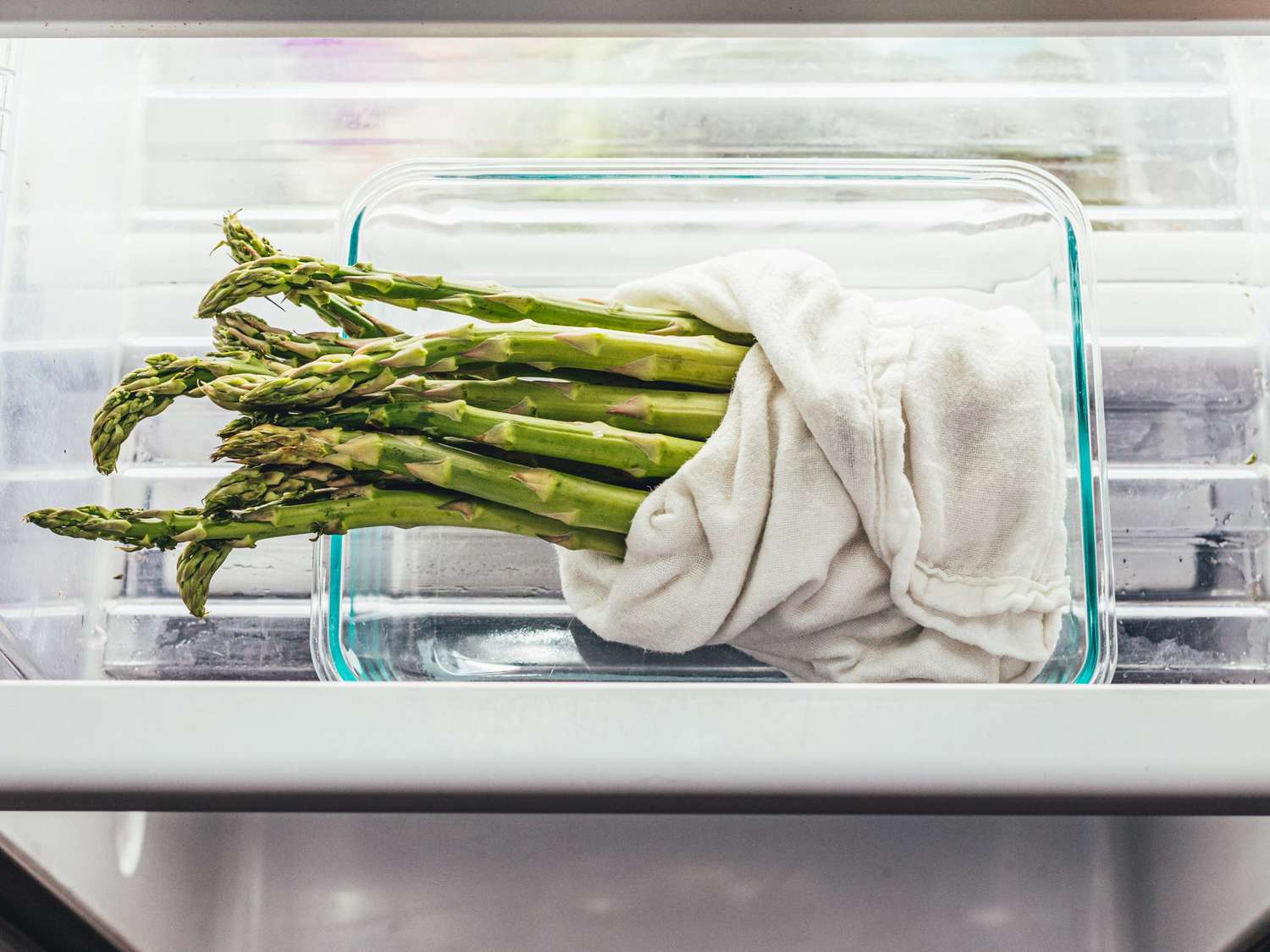


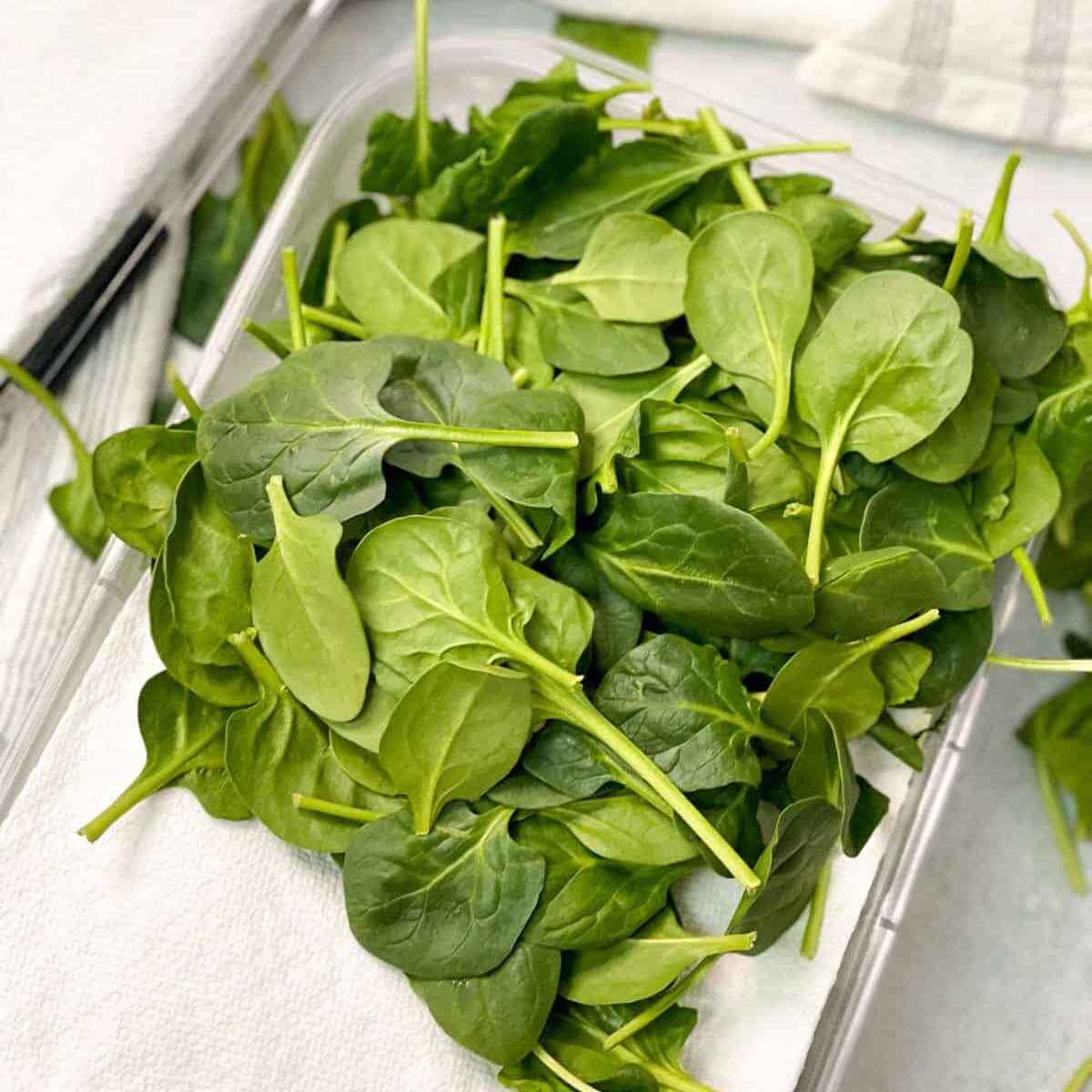
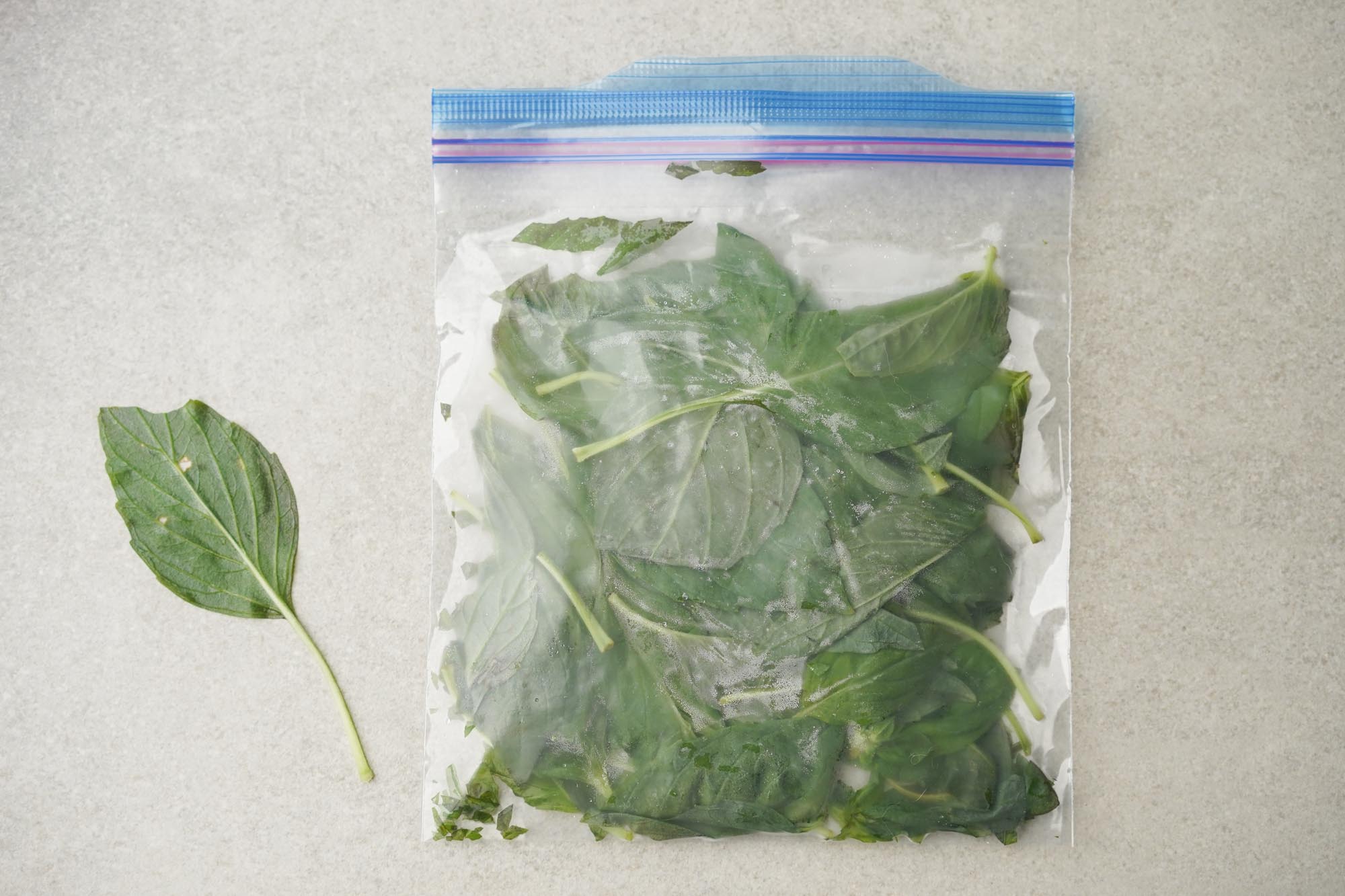


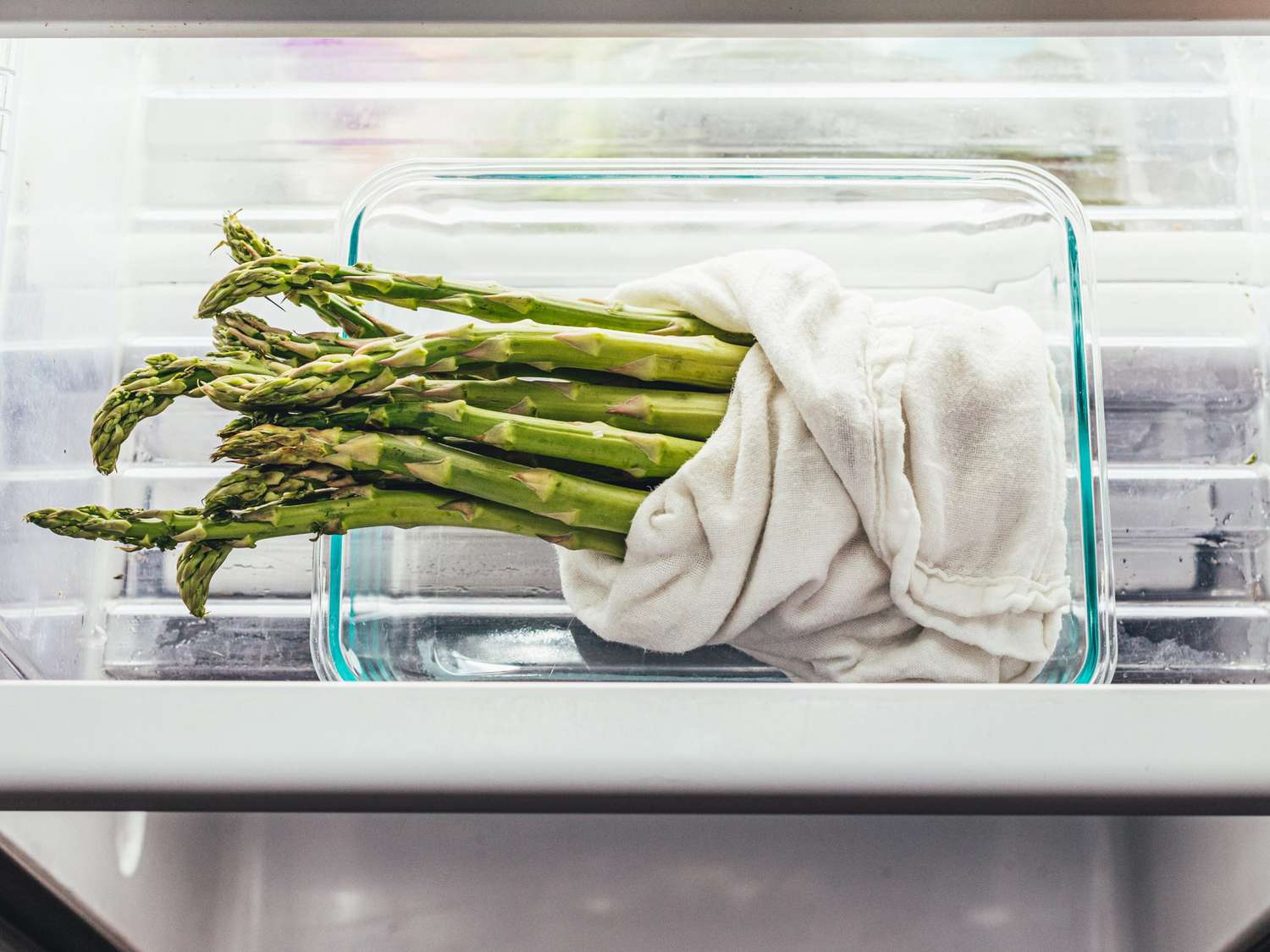
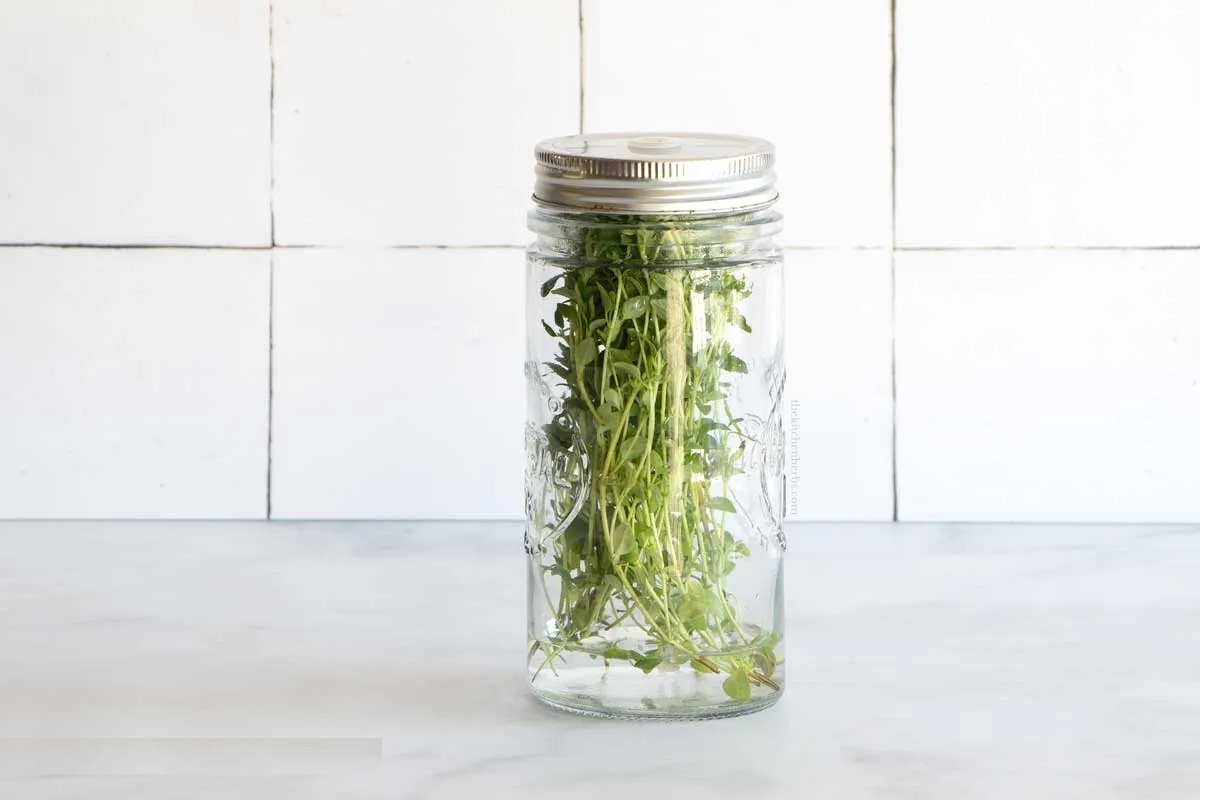
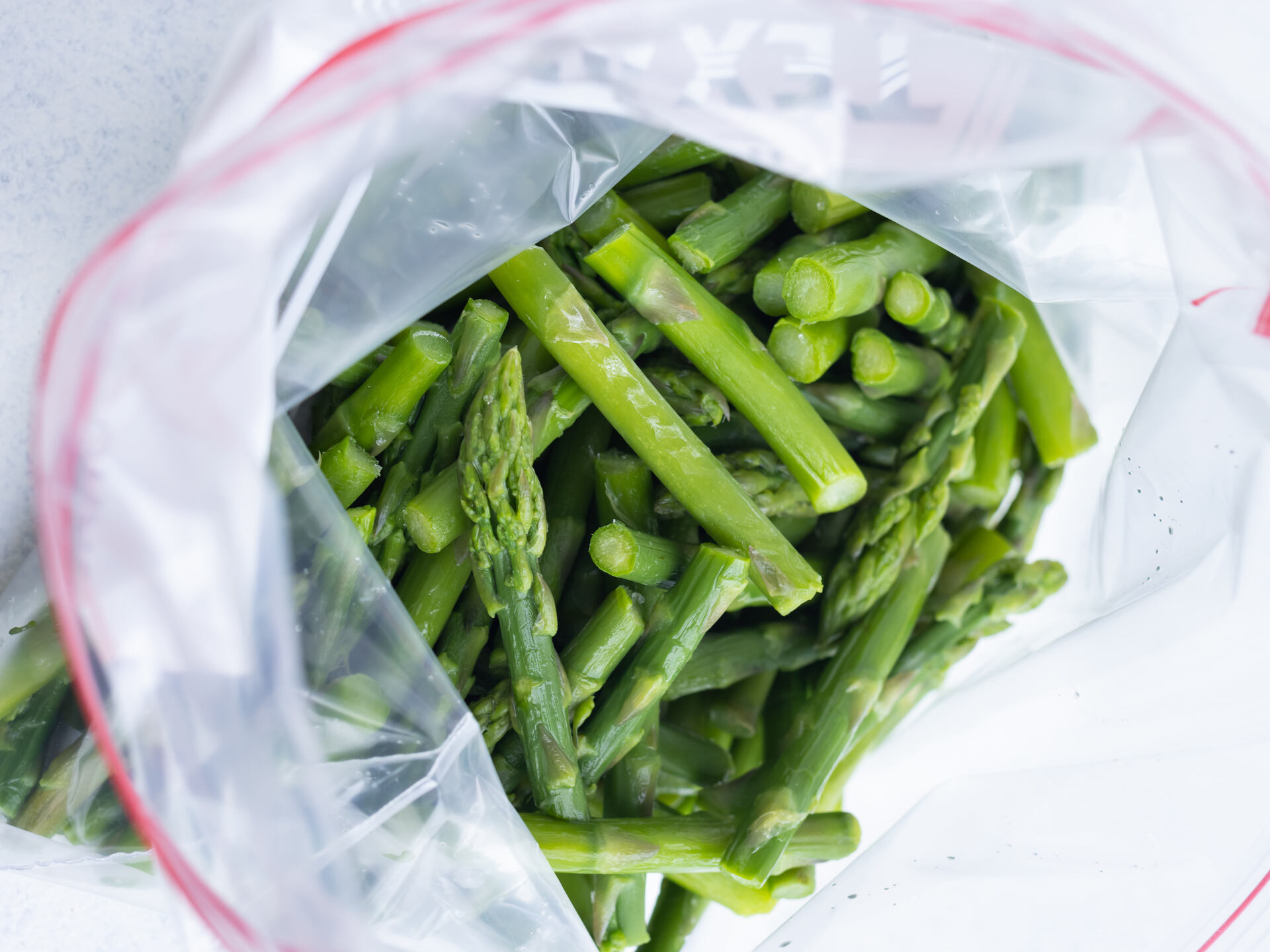
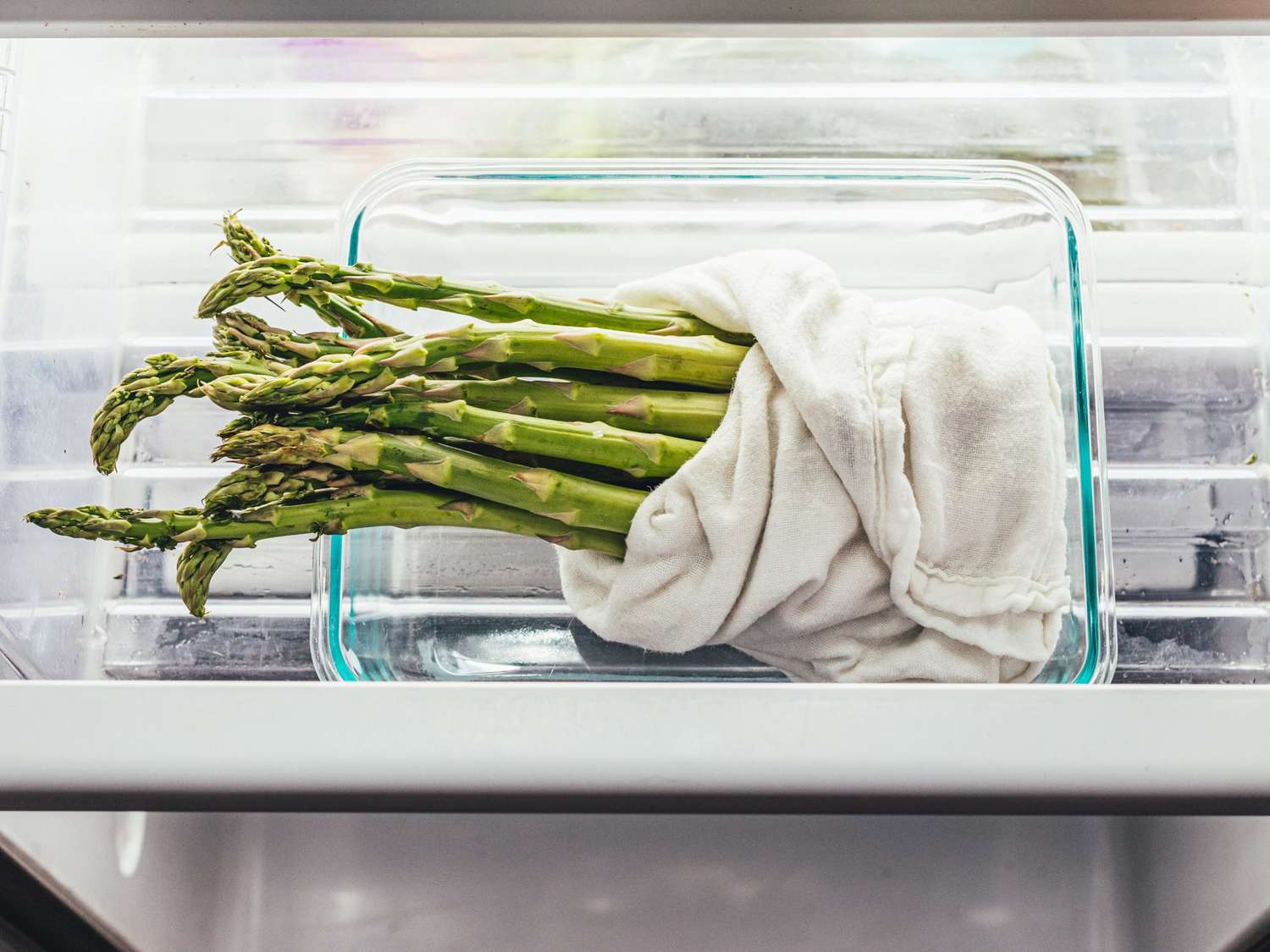


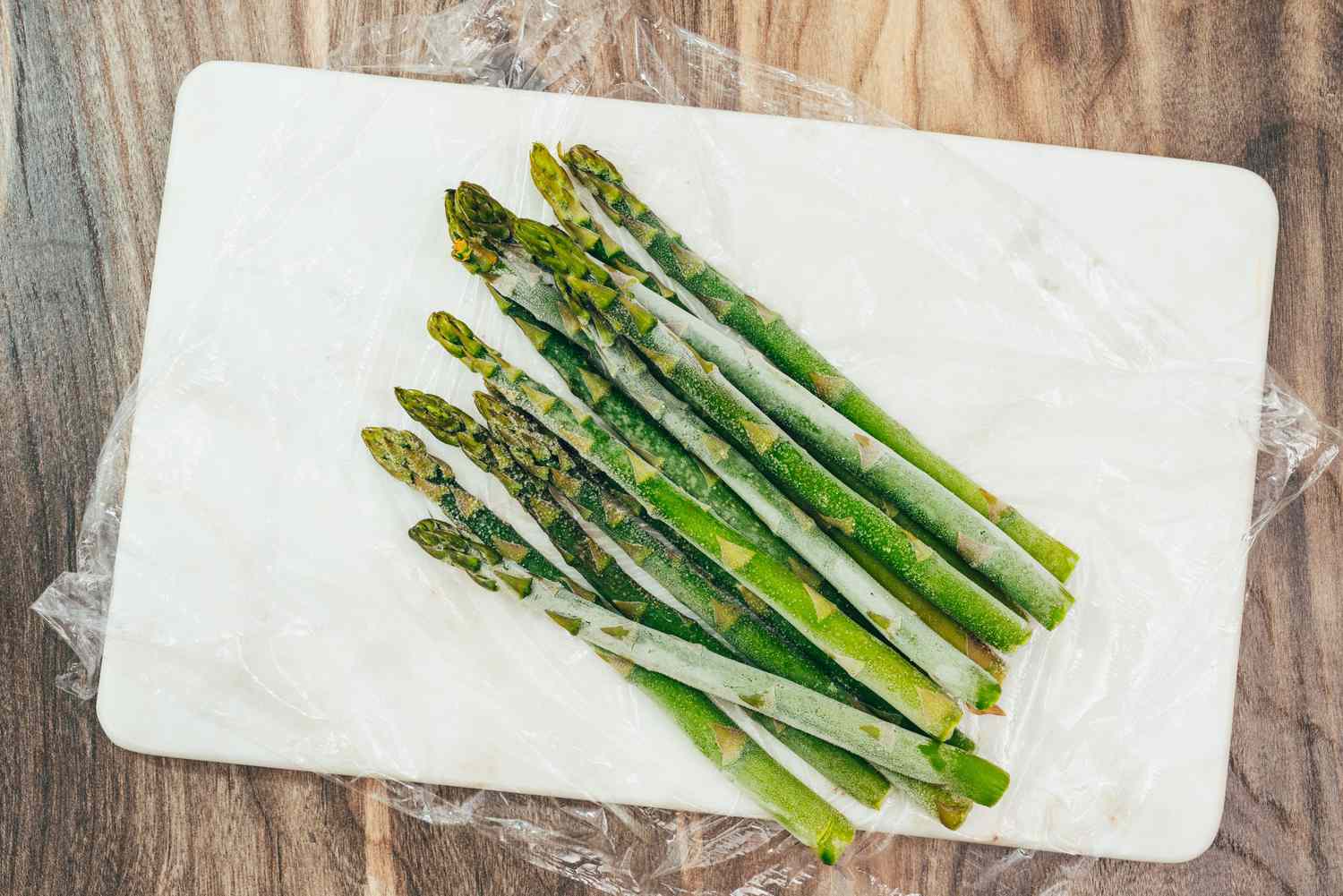

0 thoughts on “How To Store Fresh Asparagus In Fridge”